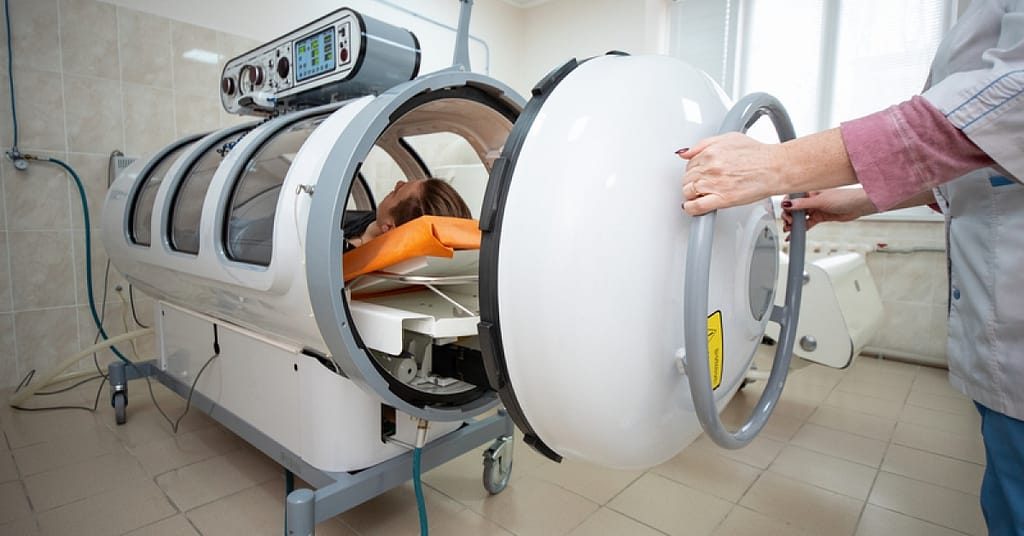(Carrick Pharmacy News) You’ve probably seen hyperbaric oxygen therapy (HBOT) in sci-fi movies, but did you know it’s a real-life medical treatment?
It’s true — HBOT devices are real and used in some medical settings. Here’s what you need to know.
What Is HBOT?
HBOT is administered to patients who are inside a hyperbaric oxygen chamber. In this chamber, patients breathe 100 percent oxygen. For reference, the air outside of these chambers is only 21 percent oxygen, according to the US Food and Drug Administration (FDA).
Hyperbaric chambers increase air pressure to help patients’ lungs take in more of the oxygen being pumped into the chamber.
Our bodies and tissues need oxygen to function. The thinking behind HBOT is that more oxygen can help our bodies fight infections and heal. While the FDA supports that theory, it also notes that too much oxygen can actually hurt the body.
What HBOT Is Approved to Do
HBOT is commonly used to treat scuba divers who experience health problems due to changes in pressure at underwater depths. Here are some of the other things the FDA has approved HBOT to treat:
- Decompression sickness
- Gas and air bubbles in blood vessels
- Severe, large burns
- Crush injuries
- Severe anemia
- Some cases of vision loss
- Diabetic foot ulcers
- Gas gangrene
- Carbon monoxide poisoning
- Severe skin and bone infections
- Radiation injuries
To treat medical conditions, HBOT must be administered by a health care professional.
What HBOT Is Not Approved to Do
Unfortunately, there are many false claims about what HBOT can do. The following are some conditions that, despite claims to the contrary, HBOT is not approved to treat:
- Alzheimer’s disease
- Autism
- Cancer
- Lyme disease
The FDA noted that HBOT was being studied for COVID-19 treatment. However, it has not yet been approved for this use.
Risks of HBOT
When it is used in appropriate settings, HBOT is generally safe, according to the FDA. While complications from HBOT are rare, the increased pressure inside the chamber can cause some issues, such as temporary vision changes, ear and sinus pain, injuries to the middle ear and, in extremely rare cases, lung collapse.
To avoid risks, the FDA recommends only using HBOT at an accredited facility. If you have questions about HBOT, speak with your health care provider.



